Are thoughts of your first draft getting you down? How do you know when it’s finished? How long should a first draft be? Can you even call it a first draft if it’s full of holes? These are all questions that can give you a case of the first draft blues. But don’t worry, a first draft is a lot simpler than you think.

Terry Pratchett said, “the first draft is just you telling yourself the story” and he is absolutely right. Really all a first draft needs to do is provide you with the bones of your story. It’s the lump of clay that you will shape into something beautiful. And its real purpose is to show you how much clay you have to work with.
Are You a Painter or a Sculptor?
Some people have a lot of clay. They have an abundance of ideas that they splash across the page with a plan to cut out the redundancies later. They are sculptors. They shape the clay roughly, knowing all the bits are too wide or too bulbous and their first draft is still hiding the story underneath all of that mess. They step away from the first draft and let it set, so they can sculpt it down to size during the revisions.
Other people prefer painting. They set aside the clay in favour of a canvas and palette. For them, a first draft is more like the sketch under a painting. It’s a few rough lines showing where the focus will be so the right details can be filled in later. When it’s done, there are still a lot of blanks and very little colour, but that’s okay because the foundation is there. When painters go back to their canvas, they’re armed with a palette full of colours and a set of brushes specifically chosen for the project.
Either Way You’re an Artist
One way is not better than the other. There is no right way to create art. So when it comes to novel writing, there is no definitive answer to the question “what does a first draft look like”. What do you need it to look like? Have you told yourself the story, and put all the important elements on the page?
Maybe you’ve got all the plot points down but you don’t have a good sense of your characters. Maybe you’ve got beautifully crafted character arcs and back stories but no idea what obstacles these characters will face. This is okay. It’s not any less of a first draft because some elements are missing.
All first drafts are missing elements. That’s why we revise: to build on what’s already there, to fill in the blanks. Once you’re sure those first elements that intrigued you enough to put on the page are solid, then you can focus on the parts that you weren’t sure about before. The first draft gives you a sense of where the story is going and that helps you narrow down what needs to happen to get it from beginning to end.
Give Yourself a Break
Jodi Picoult said, “You can always edit a bad page. You can’t edit a blank page.” The purpose of the first draft is to give you something to edit, to revise, to rework until the story in your head matches what you’ve got on the page. The only thing I can promise you is that it’s going to take more than one draft. So relax. Your first draft lump of clay looks like a lump of clay. So does everybody else’s. Even Stephen King writes more than one draft and there is a very good chance you aren’t Stephen King.
So, what does “first draft” even mean? Who am I to say I have one? Well, you’re a writer. And if you’ve written a bunch of scenes following a character or two (or more) over the course of a journey (be it an actual journey from or something more metaphorical), then even if it makes you squirm, even if you don’t feel confident about it, you’ve got yourself a first draft.
Call it something different if it makes you feel better. Call it an intense outline or a mock up if that’s more comfortable for you. But while you’re not calling it a first draft, read this post about imposter syndrome, then look your first draft right in its malformed face and call it what it is.
